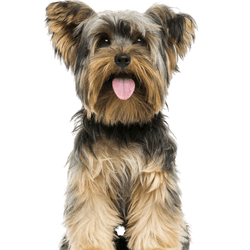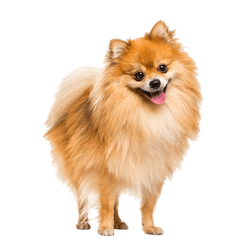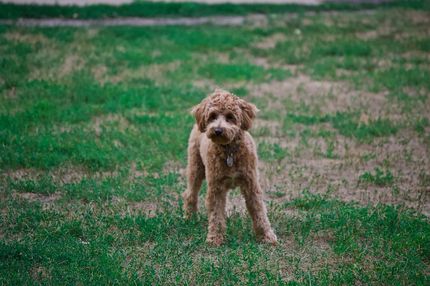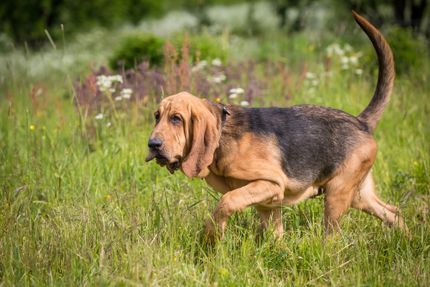Yoranian:Yorkshire Terrier and Pomeranian Mix
Facts & Origin
Pomeranian and Yorkshire Terrier mix - a hybrid breed
The Pomeranian Yorkshire Terrier is a mix of two popular breeds. This dog is small, but full of personality. They are affectionate and loving, but also have a playful side. This mixed breed is a good choice for families with children.
What are breed characteristics of this mix dog?
The Pomeranian-Yorkshire Terrier mix breed has a small, compact body and is typically around 15 cm tall and 3-4 kg in weight. They have a dense coat that is usually either black, brown, or tan, and they have a long, fluffy tail.
| Alternate Name | - |
| Origin | UK - Germany |
| Life expectancy | 12 - 16 years |
| Care requirements | high-maintenance |
| Activity level | low |
| FCI group | not recognised |
| AKC group | not recognised |
| KC group | not recognised |
More Yorkshire Terrier mixes
More Pomeranian mixes
Attitude, character and temperament of the breed
Possible character traits of Pomeranian and Yorkshire Terrier mix - Such is probably his nature.
If you are looking for a small, affectionate dog, you should consider a Pomeranian-Yorkie mix. This designer breed is a cross between a Pomeranian and a Yorkshire Terrier, two breeds known for their love of people.
Pomeranians are one of the most popular small dog breeds, and it's easy to see why. They are intelligent, spirited and independent, but they also love to cuddle and spend time with their owners. Yorkshire Terriers are also popular dogs that share many of the same traits as Pomeranians.
When you mix these two breeds together, you get a dog that is loyal, loving and full of personality. Pomeranian Yorkies are also relatively easy to train and make excellent companion dogs.
If you are considering adding a Pomeranian Yorkie to your family, there are a few things you should know about this breed. First, they need a lot of socialization. Without it, they can become shy or even aggressive. Make sure you introduce your Pomeranian Yorkie to as many people and animals as possible when they are young.
Second, Pomeranian Yorkies have been bred to be companion dogs, so they don't do well when left alone for long periods of time. If you work long hours or travel a lot, this breed may not be right for you.
Finally, Pomeranian Yorkies are prone to some health issues, including respiratory and dental problems.
Despite some potential problems, Pomeranian Yorkies make wonderful companion dogs for the right family. If you are looking for a small dog with a big personality, this mixed breed could be perfect for you.
Character
Usage


Health and breeding information
What diseases can occur in Pomeranian and Yorkshire Terrier mix.
Pomeranian-Yorkie mixes or Yorkie-Poms are a popular crossbreed of dogs. As with all mixed breed dogs, they can inherit health problems from both parents. The most common health problems that occur in Yorkie-Poms include patellar luxation, tracheal collapse, and congenital heart defects.
Patellar luxation is a condition in which the kneecap pops out of position. This is a painful condition that can lead to lameness if left untreated. Tracheal collapse is a condition of the trachea. The trachea begins to collapse, making it difficult for the dog to breathe. This condition can be life threatening if not treated quickly. Congenital heart defects are abnormalities of the heart that are present at birth. The most common congenital heart defects in Yorkie poms include pulmonary stenosis and patent ductus arteriosus.
Although these health problems can be serious, many Yorkie Poms live long, healthy lives with proper prevention and treatment.
What does this mixed breed look like?
This Pomeranian-Yorkshire Terrier mix breed has a dense, luxurious coat that is white with light brown markings. The coat is thick and dense, making this dog breed ideal for colder climates. The Pomeranian-Yorkshire Terrier mix is a small to medium sized dog breed that usually grows to 15 inches tall.
| Fur length | medium - long |
| Fur | flat coated |
| Ear shape | Standing Ears |
| Tail | short - rolled up |
| Anatomy | slim, square, slim, square |
| Size ♀ | 12 - 17 cm |
| Weight ♀ | 2 - 4 kg |
| Size ♂ | 16 - 20 cm |
| Weight ♂ | 2 - 5 kg |
| Suitable For | Beginner, Seniors, Seniors |
Known Diseases
Eye infections
Chronic eye infections can be very painful in dogs and can be treated with medication. In rare cases, the cornea must be treated.
Bronchitis
Bronchitis in dogs is an inflammation of the lower airways in the area of the bronchi.
Patellar problems
Problems with the Patellar can be a displacement or weak kneecap, which is one of the most common causes of lameness in dogs, also because of overweight.
Dislocations
Lenticular and patella luxation occur in some breeds and affect the eye.
Elbow dysplasia (ED)
Elbow joint dysplasia is a chronic disease complex of the elbow joint of fast growing dog breeds.
Heart disease
Can occur frequently in dogs and can sometimes be treated with medication.
Hip dysplasia (HD)
The hip dysplasia or hip joint dysplasia of the dog (HD) is a maldevelopment of the hip joint.
Patellar luxation
Patellar luxation is the term used to describe a displacement of the kneecap, which is one of the most common causes of lameness in dogs.
Numbness
Often occurs in old age.
FAQ
-
The Pomeranian-Yorkshire Terrier mix is commonly referred to as the Pomeranian-Yorkie mix or Yorkie Pom.
-
The Pomeranian-Yorkie mix is a relatively new crossbreed, created only in the last few decades. However, both the Pomeranian and the Yorkshire Terrier have a long and interesting history. The Pomeranian has its roots in the Pomeranian region of Germany and Poland, while the Yorkie originated in England, where it was originally used as a rat catcher in coal mines.
-
They have a dense, double coat that is usually either black, brown or tan. They have pointed ears and a muzzle that is proportional to their head size.
-
Pomeranian Yorkies are generally very playful and friendly dogs. They are also intelligent and easy to train. However, they can be yappy and do not do well in apartments or other small living spaces.
-
Pomeranian Yorkies are generally a healthy breed. However, they are prone to some health disorders such as patellar luxation, tracheal collapse and Legg-Calve-Perthes disease.
Useful Articles
You can find articles that might interest you in the dogbible blog to match your favorite breed.
Visit our magazineto stay up to date on dog trends.
To find out more, view our Privacy Policy
Find here the breed that suits you and find out what character traits it has. Here you can also learn more about the origin, size and weight of your favorite breeds.
Matching your favorite breed, you'll find articles that might interest you on the dogbible dog blog.
5 tips for the trick "give paw" - so you learn it to your dog
Anal gland inflammation - causes, symptoms, diagnosis, prevention and treatment.
Kennel cough - If your dog coughs, you should know this disease


















